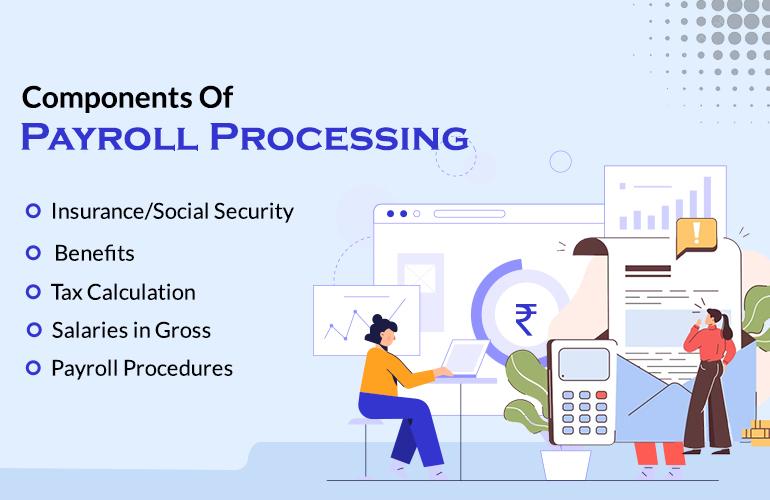Payroll is essential to the efficient operation of the firm. It is a delicate subject; even little mistakes while payroll processing can significantly impact the organization’s operations.
Employee morale can suffer as a result of a salary delay or miscalculation. Such an occurrence will eventually have an impact on the company’s productivity.
In addition to processing correct and timely payroll, an organization must follow different rules and regulations such as labour legislation, PF, PT, and other statutory compliance. To keep employees satisfied and comply with the law, HR professionals must thoroughly understand payroll.
Fundamentals of Payroll Processing
Payroll is the entire amount of money paid to employees by an employer. Its operation entails the following steps:
- Creating a pay policy for employees that includes flexible benefits, a leave encashment policy, and so forth
- Payslip components such as primary, variable pay, HRA, and LTA must be settled
- Calculating gross compensation after statutory and non-statutory deductions
- Payroll processing for workers
- Depositing TDS, PF, and other dues with the proper authorities and filing returns
Payroll’s Components
The following are four critical factors to consider when preparing payroll:
Salaries in Gross
The gross wage is the employee’s salary before bonuses, commissions, pension and retirement funds, health insurance, and taxes are deducted.
Benefits
Aside from PT and PF, employees receive long-term benefits such as gratuity, retirement plans, medical insurance, and family insurance coverage.
Tax Calculation
Aside from PT and PF, employees receive long-term benefits such as gratuity, retirement plans, medical insurance, and family insurance coverage.
Automatic tax calculation and deduction relieve employees of the burden of manually paying taxes to the government.
Insurance/Social Security
Before income tax, the corporation deducts social security and health insurance payments from employees’ salaries. The firm pays half the cost, and the other half is removed from the employee’s salary.
Payroll Procedures
While processing payroll, the payroll officer must be aware and cautious. To avoid errors, constant monitoring and rechecking are required. Pre-payroll, actual payroll, and post-payroll activities are the three steps of the payroll process.
Pre-Payroll Processing
Policy Formulation
The policy must be structured to meet the demands of the corporation. These regulations should be simple for employees to follow, as convoluted policies may be an issue in the future.
All aspects, such as the percentage of health insurance, funds, leave deductions, and late arrival laws, should be thoroughly addressed.
Gather Information
Before processing the paycheck, collecting relevant data and doing an extensive study are vital. Communication with various departments can also aid in the collection of precise data.
Because there are fewer people and fewer teams in smaller organizations, it is easier to collect data. However, it is much more difficult in larger organizations due to the vast number of personnel.
Input Validation
It is vital to validate the information gathered. Employers must ensure that no one linked with the organization is overlooked.
Processing the Final Payroll
After data gathering and validation, the next stage is to process the information. It comprises compensation changes and deductions for employees.
This is the most crucial phase in payroll processing, and the in-charge officer must double-check the money before sending it to the employees’ accounts.
Post Payroll Processing
Legal Duties
The sum must be deducted from the salary and sent to the appropriate departments of other organizations, such as insurance companies, government agencies, and social security services. There are various transfer techniques, but a challan form is typically used.
Accounting Treatment for Payroll
Companies typically keep payroll records, but keeping them classified with specific accounting books is critical. A well-organized record-keeping system will ensure a smooth process.
Payment Disbursement
The final step in the payroll process is the release of the payment, which can be accomplished via bank transfer or cheque issuance. Bank transfers have grown in popularity in recent years since they are quick and convenient for employees and employers.
Digitize your HR operation by allowing an HRMS to enable HRs to effortlessly onboard new employees, manage employee growth, and analyze data to support employee development and organizational goals.




